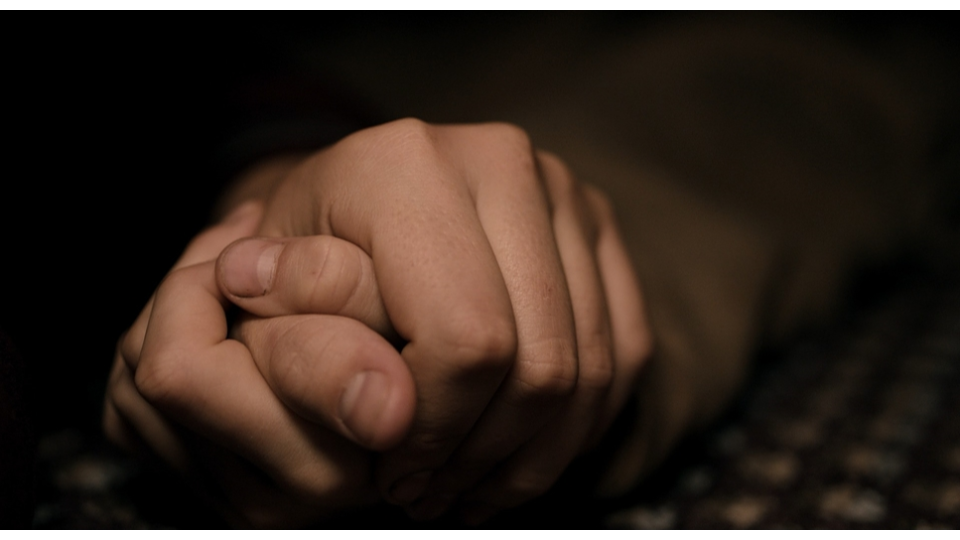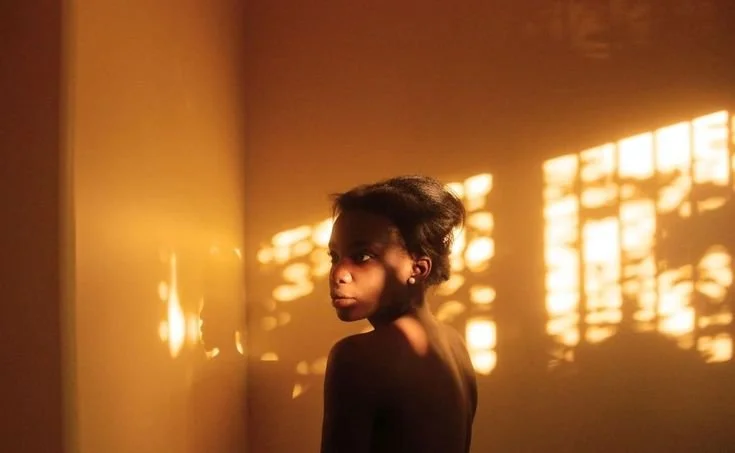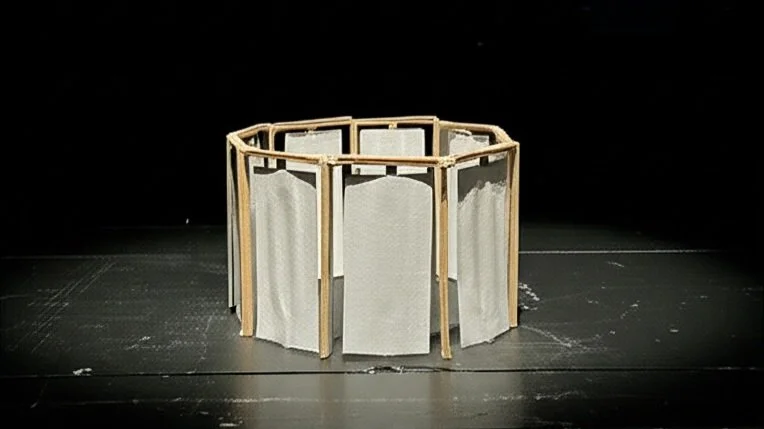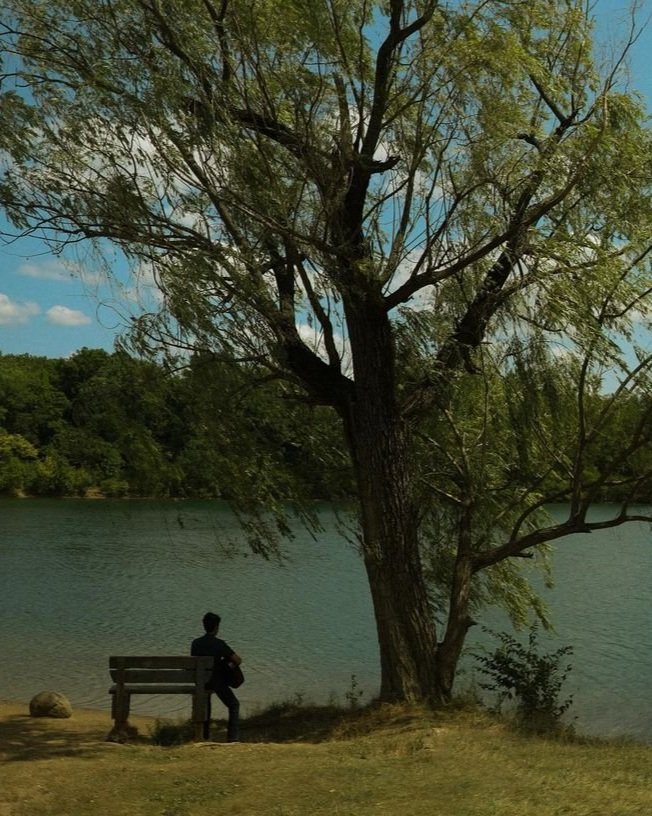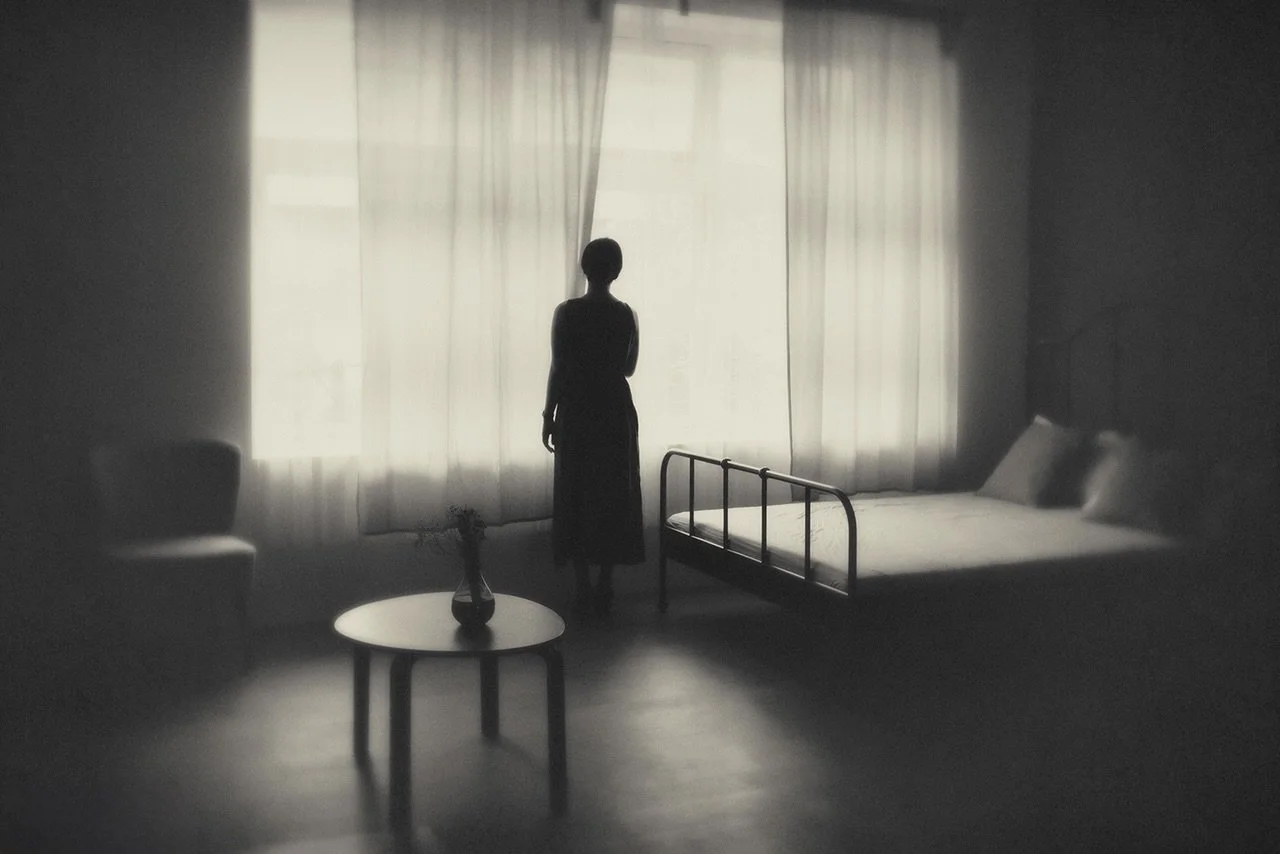CINEMATOGRAPHY
The camera acts as a quiet observer in the beginning. As the dance begins the camera moves gently. Through a balance of wide shots and intimate close-ups the camera becomes our eyes. We will play with the stark contrast between direct sunlight, shadows and artificial light. We weave between wide shots that emphasize the poetic geometry of the two Evelyns' bodies in space and tight close-ups that capture fleeting expressions, trembling hands and the silent shame that lives beneath the surface.In the zoetrope space the camera pulls wide to capture layers of overlapping motion. Figures, shadows and memories spin in rhythmic, dreamlike repetition.Note from the cinematographer:
"The cinematography in this film effectively mirrors the ongoing internal conflict often associated with adoption. Through carefully crafted camera angles, lighting choices and movement, the visual language allows the audience to viscerally feel the weight of this emotional struggle. Wide camera angles will be used alongside distance changes to distort the image and represent this struggle. Soft but contrasty lighting will be used to represent the familiar yet eerie feeling of your own home when coming back from handing over your baby for adoption."-Gustavo silva Rodriguez
production design
Placed in an abstract void Evelyn faces a towering, life-size zoetrope. Its paper-lined segments reflect flickering shadows, animating fragmented memories that reflect a prison of her pastEvelyn sits on a weathered park bench quietly observing a passing family. Our color scheme primarily consists of black, white and gray to express the intense and varying emotions of the situation. Evelyn's home becomes a surreal internal landscape: walls that hold memories, light leaking through unseen cracks, charged with a decades-old decision. Blinds open and close casting dynamic, prison-bar shadows—a visual echo of the zoetrope's cyclical entrapment.Note from the production designer:
"The space will be designed to blur the line between sanctuary and prison, changing as Evelyn moves through it, reflecting her inner conflict. The home will become a living extension of her, gradually unraveling from a familiar structure into something more fragmented and unstable. Through this shift, the design will mirror a larger emotional arc: confronting the past, accepting the self, and the difficult path toward change."-fernando diaz-ojeda
